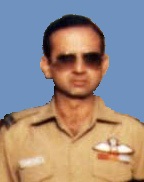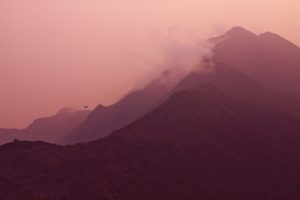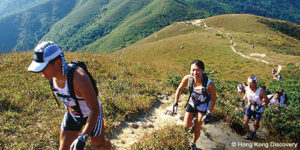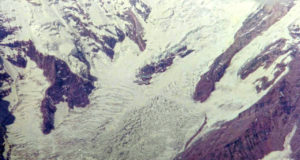Rohit C Soni, reminded me of the actor George C Scott who played Patton in that eponymously named movie. Partly this was because of the way the name rolled off your tongue and partly by the way he carried himself. I have always thought of ‘Sonyman’ as he was fondly called, as old before his … Continue reading “Memories of Rohit Soni”
Rohit C Soni, reminded me of the actor George C Scott who played Patton in that eponymously named movie. Partly this was because of the way the name rolled off your tongue and partly by the way he carried himself. I have always thought of ‘Sonyman’ as he was fondly called, as old before his time. Rohit and I were course mates at the National Defence Academy (NDA) and that’s where we first met. We were both Air Force Cadets or ‘Fly boys’ in the 55th Course which commenced training in Jan 1976. Rohit was a little older than the majority of us in the course – while most of us hadn’t started shaving, lacking the appropriate quantity and quality of facial hair, there was ‘Sonyman’ with a hardened stubble! He was the envy of all us who were doing our best to just grow a decent moustache, even past the mandatory drill square test passing Third term. Rohit also had a matching gravelly voice to go with his looks. His classmate was the then Academy Cadet Adjutant, Bharat Singh, who was two and a half years ahead of us at NDA. It was only natural that a number of cadets mistook Rohit for a senior and paid due obeisance, of course with the inevitable backlash when it was revealed that he was in fact, a junior. It was even reported that he had once been mistaken for a Divisional Officer!
C Soni, reminded me of the actor George C Scott who played Patton in that eponymously named movie. Partly this was because of the way the name rolled off your tongue and partly by the way he carried himself. I have always thought of ‘Sonyman’ as he was fondly called, as old before his time. Rohit and I were course mates at the National Defence Academy (NDA) and that’s where we first met. We were both Air Force Cadets or ‘Fly boys’ in the 55th Course which commenced training in Jan 1976. Rohit was a little older than the majority of us in the course – while most of us hadn’t started shaving, lacking the appropriate quantity and quality of facial hair, there was ‘Sonyman’ with a hardened stubble! He was the envy of all us who were doing our best to just grow a decent moustache, even past the mandatory drill square test passing Third term. Rohit also had a matching gravelly voice to go with his looks. His classmate was the then Academy Cadet Adjutant, Bharat Singh, who was two and a half years ahead of us at NDA. It was only natural that a number of cadets mistook Rohit for a senior and paid due obeisance, of course with the inevitable backlash when it was revealed that he was in fact, a junior. It was even reported that he had once been mistaken for a Divisional Officer!
Rohit, after passing out of NDA, went on along with us ‘fly boys’ to the flying training academies and was commissioned into the helicopter stream. My next encounter with Rohit was at Tezpur, where we were sent for training on the MiGs. He was by then posted to an operational Helicopter Unit, commanded by Wg Cdr ‘Fighter Pilot’ Malhotra. We spent about a year together, but after the stint at Tezpur the fighter pilots split up to join various operational squadrons, most of us on the Western front.
In Jan 1987, we bumped into each other once again at Tambaram, since we were both selected for the same Flying Instructor’s Course. We were newly married by then and Rohit and I were allotted the same barrack style accommodation, he at the end of the block and I next door. There were seven of us, all the junior most of the married officers, including Chandra Kant Vyas, a Direct Entry course mate of ours, also from helicopters.
Rohit and his wife Sangeeta with their new born son Karan were all squeezed into the same standard ‘hand me down’ two room bachelor accommodation as the rest of us Course officers. ‘Hand me down’, since even the single officers had a newer, larger set of rooms than we married officers. If we thought we had problems as newly marrieds and with no children yet, Rohit and Sangeeta must have been truly jammed -in true Indian tradition, Rohit’s mother Mrs Mahasweta Soni was also staying with him to help out with new-born Karan. ‘Aunty’, of course was a great comfort to all of us, especially the young wives in the block – an older person ever at hand and ready to lend a sympathetic ear and serve a comforting cup of tea. This was definitely the case when all of us were recalled to our parent units for Op Brasstacks.
Leaving Tambaram, we were not sure of the outcome of the Operations –there were tearful farewells all round with ‘Aunty’ extolling the tearful wives to put up a brave face as the husbands were leaving to defend the nation. Since we were under training however, we were the last to be recalled and the first to return to peace locations. As luck would have it, only two of us in the block were from the Fighter stream- the rest were all from either the Helicopter or the Transport stream.
I mention this to highlight the fact that most of the training at Tambaram was of the aerobatic type with ‘patter’ – the verbal description of a manoeuvre an instructor is supposed to demonstrate, synchronised with the manoeuvre itself. Us fighter jocks were familiar with the manoeuvres as that was our bread and butter – we just had to master the dreaded ‘patter’, which had to be learnt by rote. The others in the block had the unenviable task of learning both, the manoeuvres as well as the ‘patter’ which made the course pretty tough for them.
‘Sonyman’ had an ace up his sleeve however – the Commanding Officer at Tambaram was his very own ex CO, now Gp Capt ‘Fighter Pilot’ Malhotra. While the fighter jocks chilled out and the rest burnt the midnight oil practising ‘patter’ on our long suffering wives, ‘Sonyman’ was nowhere to be seen. It turned out later that he was getting his ‘patter’ instructions straight from the horse’s mouth, presumably over a drink at the CO’s house!
After the gruelling time at Tambaram, which wasn’t helped by the cramped living conditions and the sultry weather, all of us successful Instructor pilots were sent off to the Flying Training Establishments in and around Hyderabad-Secunderabad. Rohit and I had a fairly longish time together at AF Station Hakimpet which hosted both, the Helicopter Training School as well as the Fighter Training Wing. I remember distinctly one flying incident involving Rohit, while at Hakimpet. It was during a routine training flight, while carrying out a practice autorotation exercise, the tail rotor struck the ground while coming in for a landing. Rohit had a pretty close shave then and we all breathed a collective sigh of relief when we heard he had escaped unhurt. Once we completed our tenure as instructors, we were pretty much out of touch and went our separate ways, lost in the maze that is the IAF.
Facebook and Whatsapp were yet to appear on the horizon, calls and mails were not as common place as they are now – STD calls were still made at telephone booths with an eye on the meter displaying the large amounts we were running up. Once in a while though, we bumped into each other at some Temporary Duty station, either on detachment or on some short course, but that was about all. I retired prematurely from the IAF and moved on to Mumbai in 2003, while Rohit plodded on in the Air Force, like the good soldier he was. I had heard that he was commanding the AF Museum at Palam and couldn’t resist a chuckle thinking that it was an appropriate place for ‘old man’ Soni – along with all the ancient war birds! I have no doubt he was ribbed by each and everyone of us who came to know of this posting.
Despite all our friendly leg pulling, Rohit was a true sport. He took all of it in his stride and often gave back as good as he got. It was with deep sadness I learnt of his recent losing battle with cancer. He was a brave and proud man who didn’t want to seem weak in the eyes of his friends. He wanted to keep his struggle a private affair – one only known to his family and his close friends. By the time his condition was made known to us, his course mates, the cancer that was eating away at his body was in its terminal phase.
Rohit breathed his last on the 12th of May, surrounded by his family. I along with my course mates grieve his passing and can only offer our deepest condolences to his bereaved family. He leaves behind his wife Sangeeta, his two children Karan and Tina, and his mother, Mrs Mahasweta Soni. Sangeeta is a strong lady and I am confident she will recover from this blow to the family with the assistance of her children.
We, as course mates, must do our best to be with her in these troubled times and help her get back to life as close to normal as possible. Keeping in touch is easy these days, and necessary – please do so. It may be the only thing required at this stage – to know that Rohit’s friends and course mates are available as a support system.







